Ideal Scope – Basics
The Ideal Scope is a cut quality assessment tool for round diamonds. Its translucent cone and magnifying lens create a structured light environment which reveal areas of brightness, leakage, and contrast when placed over a diamond.
Ideal Scope in Action
Wondering which of the many diamond colors is best for you? Our elite list of vetted vendors like Whiteflash and James Allen are experts at listening and helping you determine which combo of the 4Cs is perfect for you - and nicely in budget. Contact Us and get help today.
Ideal Scope Illustrated
Under bright jewelry store spotlights all diamonds look bright.
The real test for diamond beauty happens under normal and low lighting conditions. Depending on how it was cut, light entering a diamond from above will either reflect and come up to the viewer’s eyes as brightness or escape through the bottom as leakage or windowing, resulting in dark areas.
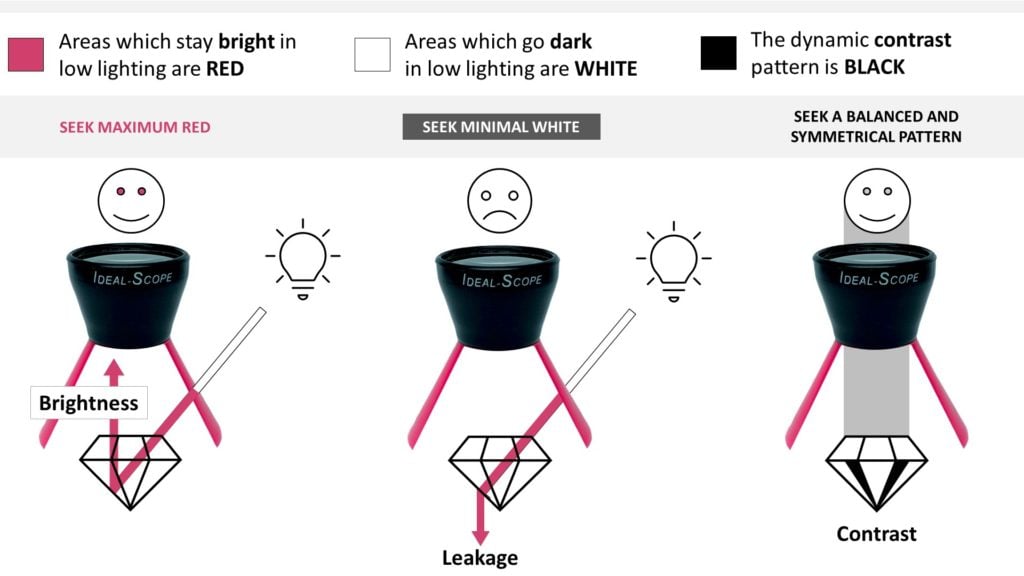
Ideal Scope Analysis
Seen in Ideal Scope, the most brilliant diamonds have abundant red areas (brightness) with minimal white or light pink areas (leakage) and a symmetrical pattern of black (contrast) which resembles a pointed star.
Ideal Scope Examples
The first four (left to right) would all receive the “Excellent” cut grade.

- Left example: This is the brightest stone (red areas) with minimal leakage (white) and balanced, symmetrical contrast (black).
- Middle examples: Decreasing brightness (red areas). Increasing leakage (white). Decreasing structure and balance in the contrast pattern (black).
- Right example: Least bright (red areas). Most leakage (white). Unbalanced, asymmetrical contrast (black).
Did You Know? Ideal Scope is rarely seen in stores because it will reveal deficits in most diamonds. Guarantee your diamond has superior performance with standout vetted vendors willing to provide Ideal Scope images, including Whiteflash and JamesAllen.com.
Ideal Scope Chart
In addition to brightness, leakage and contrast, an Ideal Scope also shows a diamond’s optical precision (aka optical symmetry). Some vendors will use an Ideal Scope photo for the ‘arrows’ and a Hearts and Arrows (H&A’s) viewer image for the ‘hearts,’ seen when the diamond is turned upside-down. This is useful, because the Ideal Scope image provides info on the diamond’s light return, where an ‘arrows’ image does not. The main difference is the H&A’s viewer design shows the arrows as white whereas the Ideal Scope shows the same arrows, but as a black eight-pointed star in symmetrical well-cut diamonds (see H&A’s examples).
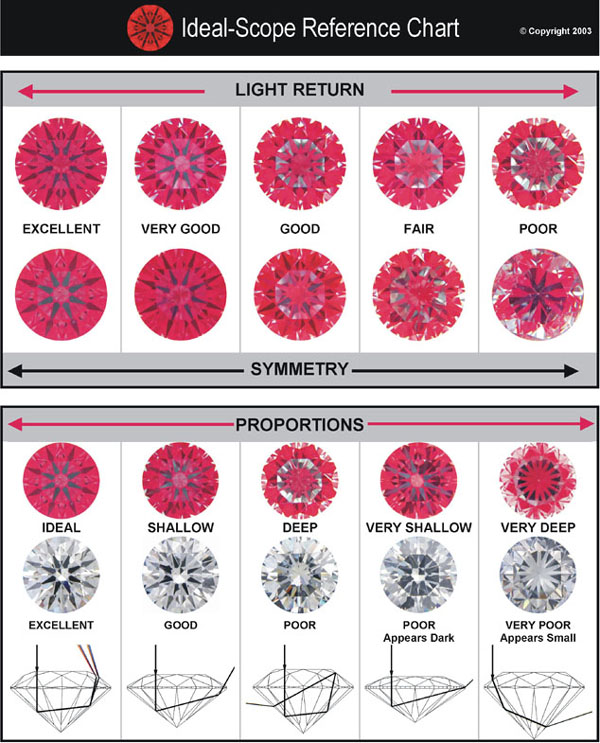
The Ideal Scope is based on a principle discovered by Kazumi Okuda in the 1970s.
PriceScope’s 1-5 star ratings are categorical comparisons with the most thorough, consumer-focused online diamond and jewelry vendors, in categories, we believe reflect our experienced consumer community’s values. Check out PriceScope Jeweler Reviews.
Brightness and Leakage Explained
Depending on the main facet angles, light entering a diamond will either reflect and shoot up to the viewer’s eyes (as brightness) or escape through the bottom (as leakage or windowing). In general terms, brightness is desirable, leakage is to be avoided – with exceptions.
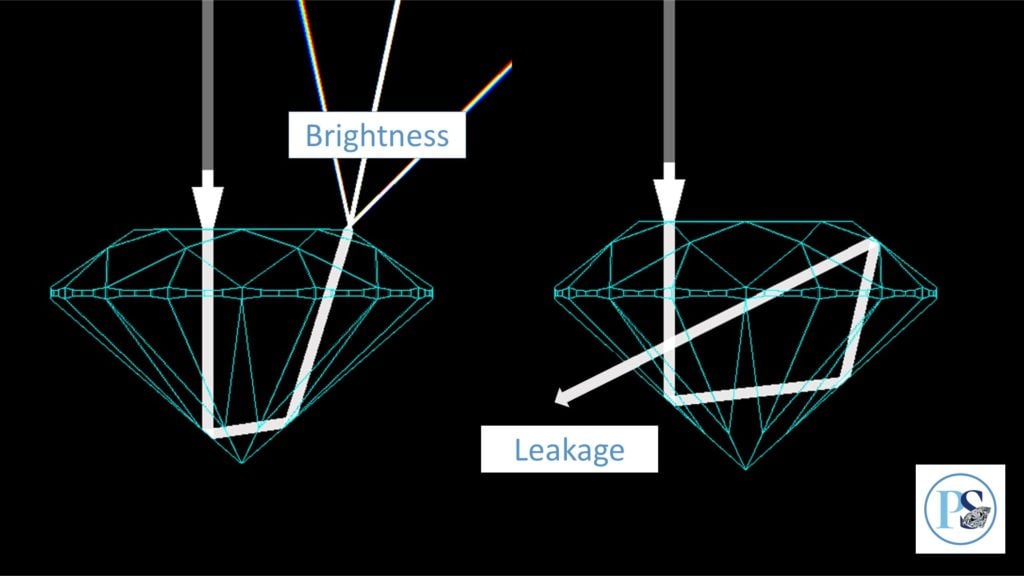
Contrast Explained
Some light from above will always be blocked by the viewer, creating a dark pattern. You can see the contrast effect in diamond photos because the black camera lens blocks light the same way a viewer does. The on and off contrast effect is a dramatic component of scintillation when diamonds move, as darkened facets change rapidly to white or colored flashes, then darken again.
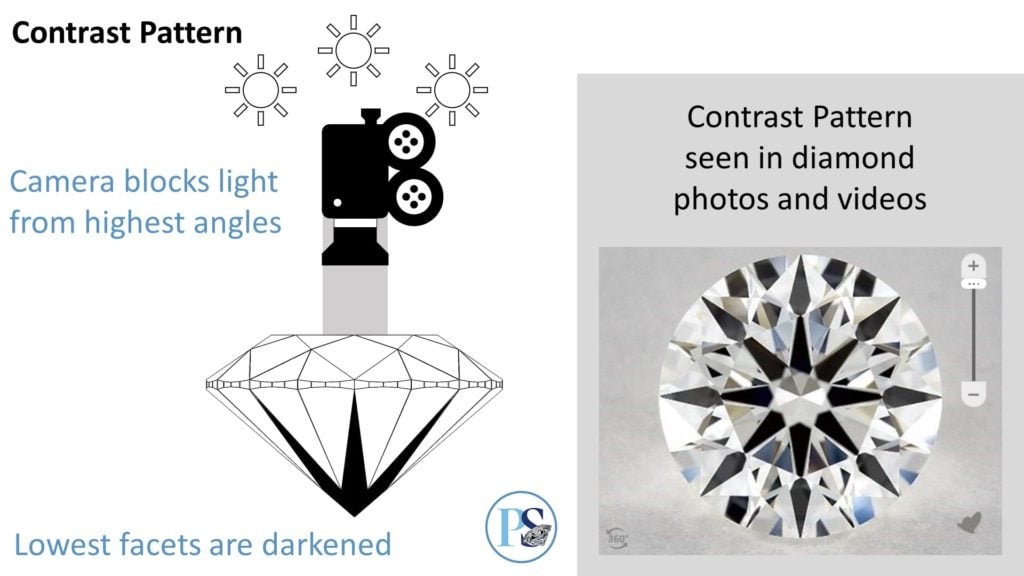
Under optimal lighting: When combined with great brightness, a diamond’s contrast pattern drives the vivid “on-off” suite of white and colored flashes we see as sparkle in brilliant cuts. The amount and distribution is key. Generally speaking, a balanced and symmetrical contrast pattern is desirable.
Contrast in Ideal Scope
Ideal Scope codes light from directly above the diamond black. This simulates the amount of light obstruction caused by the average person’s head at a distance of 25cm (10 inches).
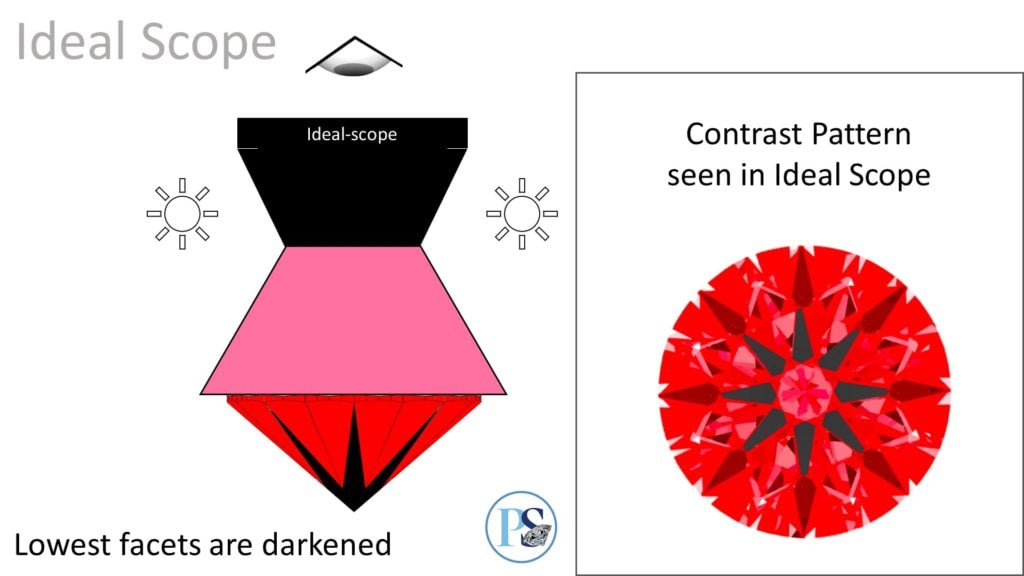
Ideal Scope Logic
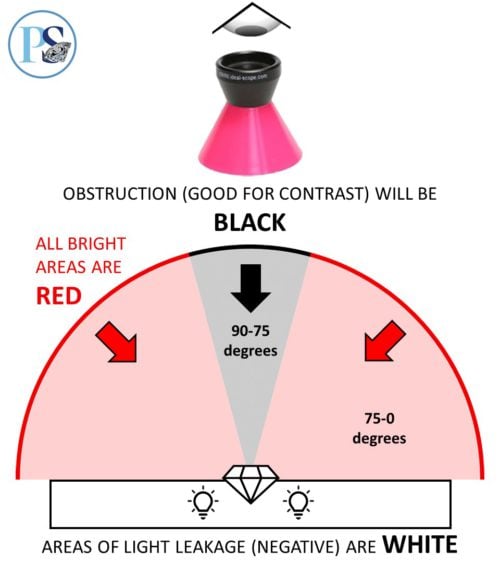
See our Diamond Performance Explained page for more illustrations.
If you’re looking to buy loose diamonds online, use our special tools to reveal the best cut quality diamonds! Start your diamond search and choose from over a million loose diamonds for sale. Use our filters to find either natural or lab diamonds, as well as fancy color diamonds.



